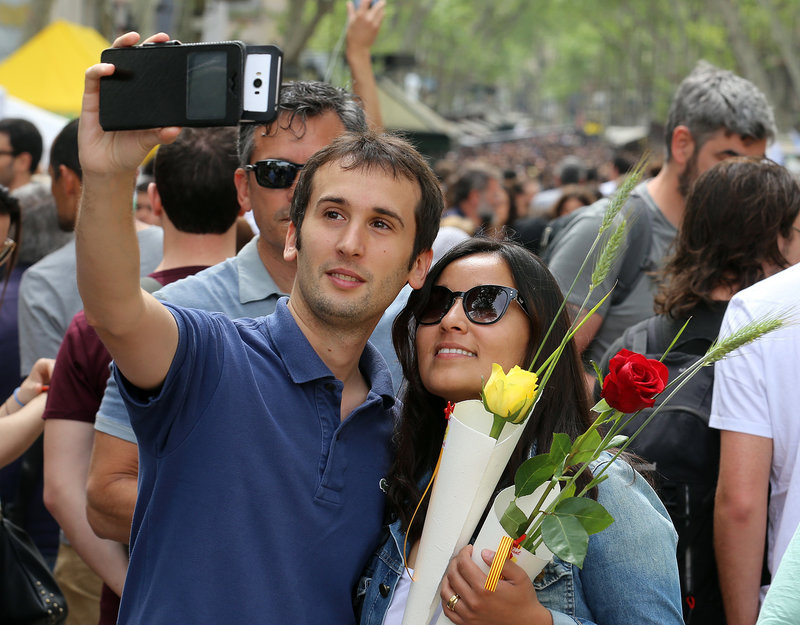THE LAST WORD
THE DAY OF BOOKS AND ROSES
Sant Jordi’s Day, Catalonia’s annual celebration of romance and reading on April 23, has to be one of the strangest festivities in the world. What you have is a spring festival whose main symbol is a red rose, which in legend magically bloomed from the blood of the dragon slain by Saint George. It is not so hard to imagine the cinematic version, with the victorious hero stooping in clanking armour to pluck the rose from the blood-drenched ground and handing it to the beautiful young woman he has just saved from death in a gesture of courtly love that will be imitated for centuries to come. But the books?
In 1995, UNESCO declared April 23 to be World Book Day, because it is the anniversary of the deaths of two of the world’s greatest ever writers, Cervantes and Shakespeare. (As an aside, Shakespeare is also supposed to have been born on April 23, but all we know for sure is that he was baptised on April 26 and it is tradition that says he was born three days earlier, on St George’s Day, England’s patron saint, which is a neat coincidence.)
Meanwhile, April 23 is Sant Jordi’s Day in Catalonia, where there is the curious tradition of loved ones exchanging roses for books, in a sort of intellectualised version of St Valentine’s Day. Handing someone a red rose as a sign of romantic affection is easy to understand, but for that person to then hand back a copy of Copernicus’s translation of Theophylact Simocatta’s Epistles, for example, is much harder to imagine.
Clearly it is the quirky nature of Sant Jordi’s Day that makes it stand out as a festivity, and which garners it so much international attention and leads publications like ours to devote multiple pages to covering the celebration (see pages 17 to 19). As unlikely a combo as it might seem at first glance, mixing books and roses, romance and reading, has turned out to be a bit of a masterstroke. While the love element goes way back to the 15th century, the book side of the feast day only began in the 1920s, when April 23 was chosen as a good day for marketing books and which is the origin of the bookstalls in the street.
A hundred years later, thousands upon thousands of people will pour onto the streets of Catalonia to stroll and browse stalls in the spring sun while buying roses and books. By promoting Sant Jordi’s Day as a centuries-old tradition and a true test of one’s love and affection, the book industry gets to sell books, which is even more important at a time when ever fewer people are reading. Nowhere near as many books would be sold if it were merely World Book Day without the legend, the roses and romance. Marketing, it seems, is nothing new and it is a lesson that International Wheelchair Day (March 1) or Wikipedia Day (January 15) would do well to learn.
opinion


